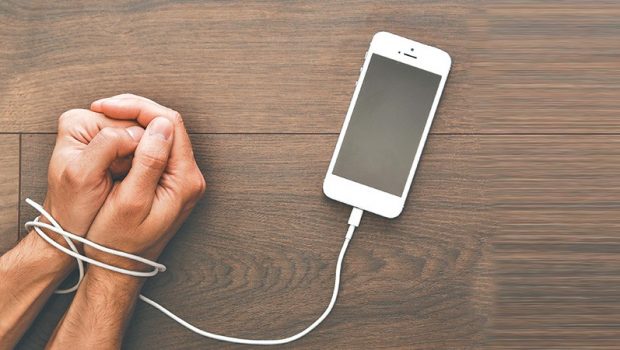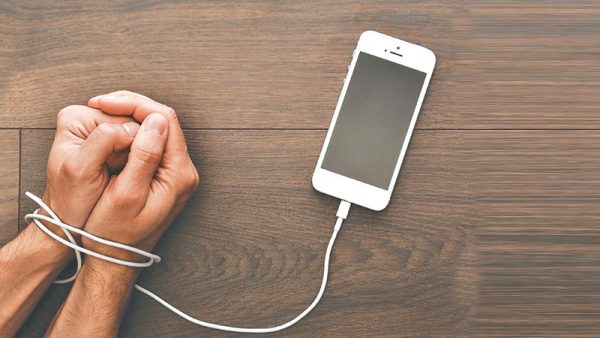Ways to Break Up with Your Phone
An addiction is a complex disease, which affects the function of the brain and body. The only problem is some addictions aren’t always easy to spot. When someone’s addicted to alcohol, for example, you can always expect to see a bottle of alcohol present around them, especially in dire situations. With technology on the rise, however, addictions can be found in other areas too, besides the bottom of the glass bottle. Where can it be found? The answer is simple: in our smartphones — and let’s be honest, it’s no wonder why they’ve taken over our lives:
They snap pictures, remind us of important events on our calendars, keep us in touch with loved ones, store our favorite songs, help us when we’re lost, and provide us with internet access on the go. Although these features are amazing, they can still get in the way of the real world and in some cases even rewire our brains to become more dependent on them in the long run.
So, if you find yourself checking your phone first thing in the morning (before getting out of bed) or while out having a meal with family and friends, you just might have an unhealthy relationship with your device. Fortunately, there are ways to kick the addiction and claim some of your valuable time back, as long as you’re willing to do the following:
Change Your Daily Habits: “What would you give up for better sleep?” is a question a lot of people struggle with – mainly because the answers vary. Some people, for example, might say they’re willing to give up food, liquor, social media, and television, but how many are willing to give up their phones?
With that in mind, you probably have specific times you check your phone throughout the day – without even realizing it. Some people check their phones in the morning (before getting out of bed), while others do it on their way to work. Whatever the case may be, by becoming more aware of your habits and reflexes, you’ll be able to take the necessary steps towards reducing your phone time. You don’t have to cold turkey all at once — unless you’re able to.
Instead, start small and practice storing your phone in places like the bathroom, kitchen, or living room when you’re getting ready for bed. That’s because research shows that having a phone present when you’re sleeping can actually affect the overall quality of sleep you get, which can also impact your well-being. So rather than leaving it on your nightstand, take the first step and place it somewhere else. If you’re worried about waking up on time for school or work, then simply invest in a cheap alarm clock.
Many people start the day by peeking at the screens of their phones – to check emails, texts, and social media accounts. This means that the next step for you is getting through the morning without feeling the urge to check your phone. One way you can fight the urge is by eating. That’s right, by giving yourself enough time to sit down and eat breakfast, you can focus on what really matters — your health.
Another way to overcome this obstacle is by setting boundaries for yourself and getting your loved ones on board to help you. This could mean never checking your phone after a certain time (unless it’s an emergency) or limiting yourself to specific days. Remember, when it comes to changing daily habits, the key here is to start small before jumping headfirst into your decision.
Turn On Your Phone’s Grayscale: Perhaps one of the best ways to kick your phone addiction is by making the screen much less desirable to look at. That said, by turning your screen gray and lowering the brightness, you not only reduce the chances of getting dry eyes – the most common condition affecting the cornea, you also trick the brain from sending neuronal reward signals to the rest of the body. These are the same signals sent to the body when you play video games, slot machines, or check your social media accounts, of course.
You can turn on grayscale by searching through your phone’s settings. On iPhones, you may have to go to “Display Accommodations” and search for the “Color Filters” option. For Android, however, you can find screen settings under the “Settings” option. Once there, you’ll see “Display” or “Accessibility” to help you make the adjustments.
Uninstall Apps: If the thought of turning off notifications doesn’t sound like an appealing idea to you, then go nuclear and uninstall all those unnecessary apps you have on your phone. Where do you start? Start by looking at the apps that use the most data and offer the most online services to your phone. Do you think you really need that Facebook and Twitter app on both your desktop computer and your phone? Besides, if anything, you can always access your social media accounts right from the web browser on your phone.
When you’re removing apps on your device, treat the time spent on your phone with as much care as possible. In other words, don’t get distracted, and keep your eyes on the prize. In the long run, removing apps won’t only reduce the number of notifications you get throughout the day, it’ll also free up some space on your phone. Remember, the ultimate goal is to reduce how much time you spend on the phone, not to get rid of it. The key is to just find the right balance and put yourself in a favorable position to be successful. That way, you have control of your phone, and your phone doesn’t have control of you.
Thanks for the read! Did I miss anything important? What are some other ways users can break up with their phones? Feel free to leave a comment below.
About the author:

H. Davis loves being active and spending time with his family. If you can’t catch him online, you might be able to catch him watching sports or reading up on new gadgets. Follow him on Twitter at @Davis241. Thanks!
















